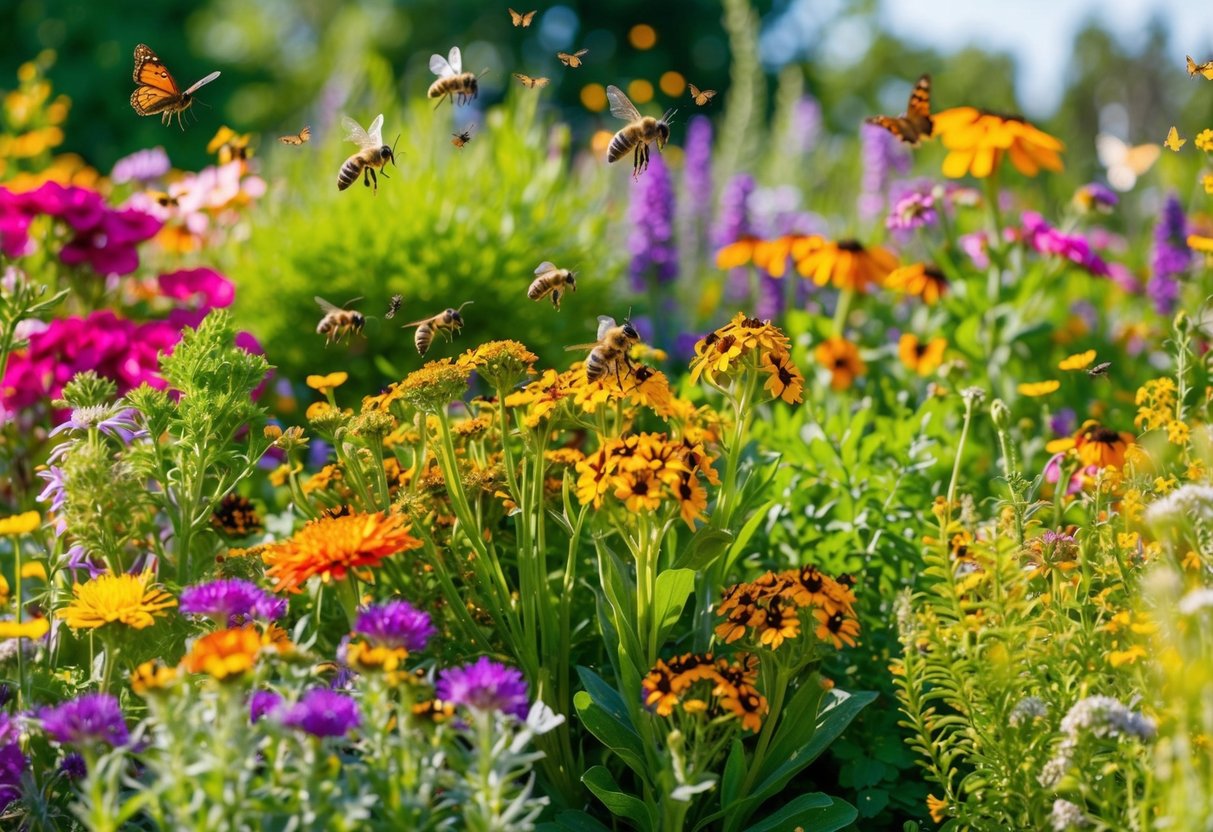
Enhancing Garden Habitats for Pollinator Conservation
Enhancing habitats for pollinators involves creating safe shelters and avoiding destruction of their natural environments. Key conservation efforts focus on providing essential resources like water and protection for these important creatures.
Creating Shelters and Water Sources
Providing shelters and water sources for pollinators is essential in promoting their survival. Native plants create natural shelters and act as landing platforms, providing food and cover. Dead wood, leaf litter, and small brush piles create safe spaces for nesting.
Water is critical for pollinators. Simple dishes filled with water and stones for perching ensure they can drink safely without drowning. Adding gardens with shallow water features can dramatically enhance pollinator habitats.
Encouraging the use of natural landscapes reduces the need for pesticides and fertilizers, supporting healthier environments. Choosing a variety of flowering plants with staggered bloom times throughout the growing season creates continual food supply for pollinators. These practices not only provide physical shelters but also address nutritional needs.
Avoiding Habitat Destruction
Avoiding habitat destruction is crucial for pollinator conservation. Urban expansion and agriculture often result in habitat loss, reducing areas where pollinators can thrive. To counter this, gardeners should preserve existing habitats and restore degraded ones.
Minimizing lawn space and replacing it with native plant species can boost pollinator habitats. Reducing pesticide use prevents harm to these vital insects, ensuring their health and survival.
Preventing habitat fragmentation by creating connected green spaces helps pollinators move freely, supporting their migration patterns. Implementing organic gardening practices further reduces the negative impact on pollinator habitats. In each of these actions, the focus remains on mindful conservation efforts to provide sustainable environments for pollinators.
Promoting a Safe Environment for Pollinators
Ensuring pollinators thrive involves using alternatives to harmful pesticides and limiting the spread of invasive plants. These practices contribute significantly to creating a healthy habitat.
Minimizing or Eliminating Pesticide Use
Reducing or eliminating pesticides plays a crucial role in protecting pollinator populations. Many common chemical pesticides can harm bees, butterflies, and other beneficial insects, disrupting their roles in ecosystems. Opting for natural pest control methods can be beneficial. Techniques such as introducing beneficial insects, like ladybugs and lacewings, are effective at keeping pest populations in check. Using barriers like row covers or practicing crop rotation can also reduce reliance on chemical solutions. Homeowners and gardeners are encouraged to educate themselves about integrated pest management, which focuses on sustainable and least-toxic methods for pest control. Prioritizing manual removal of pests or using organic options like horticultural oils can create a safer haven for pollinators.
Controlling Invasive Plants
Invasive plants can pose significant challenges to pollinator-friendly gardening. These plants often compete aggressively with native species, thereby reducing food sources for pollinators that depend on native flora. Eradicating invasive species is essential to promoting biodiversity and ensuring that indigenous plants, which are critical for local pollinators, flourish. To control invasive plants effectively, gardeners should identify and remove them before they establish a firm hold. Regular monitoring and timely intervention are critical steps. Selecting native plants for gardening can help prevent the spread of invasive species while also offering food and habitat for local wildlife. Proper disposal of uprooted invasive species ensures they do not re-establish or spread to other areas.